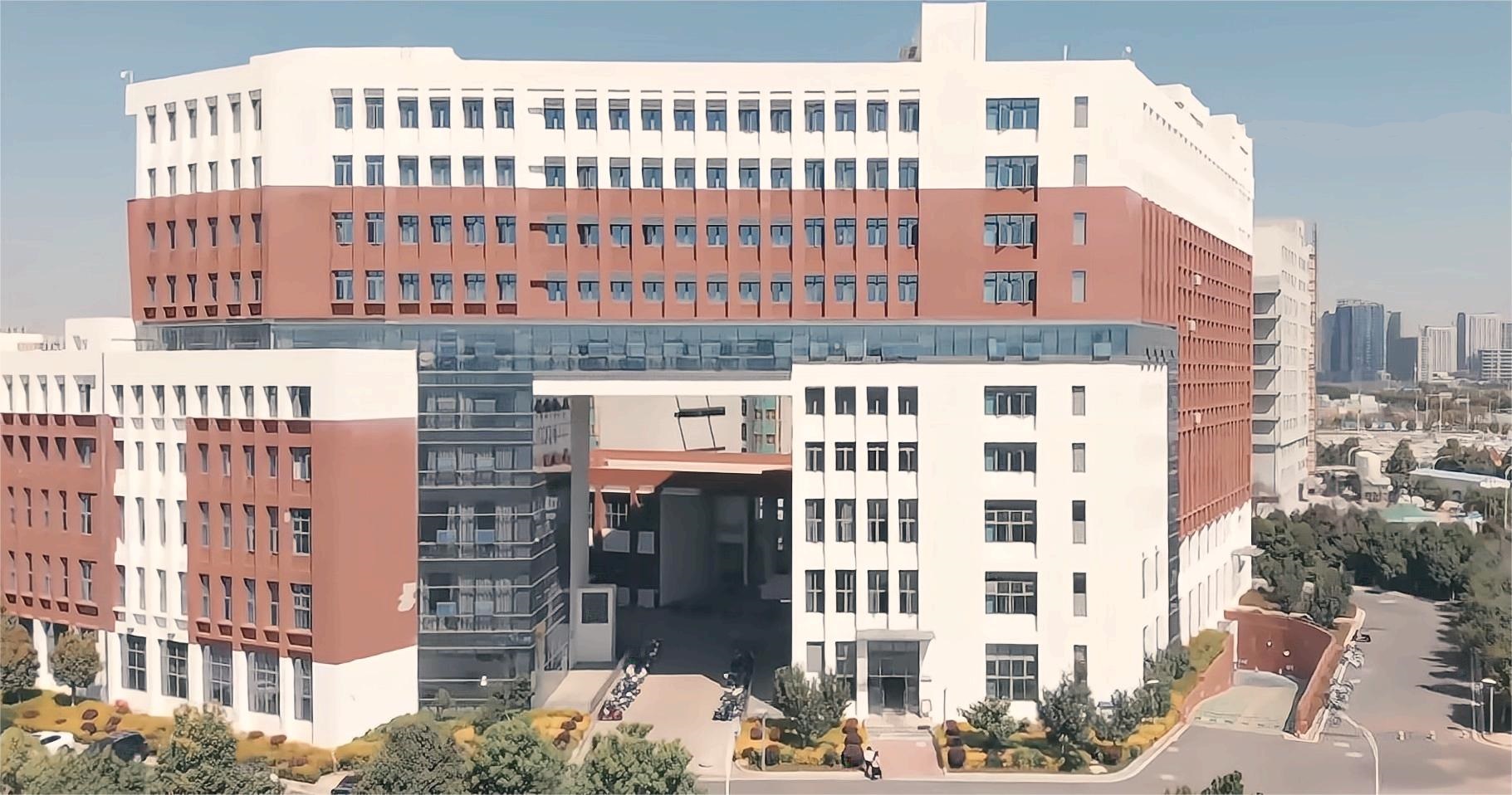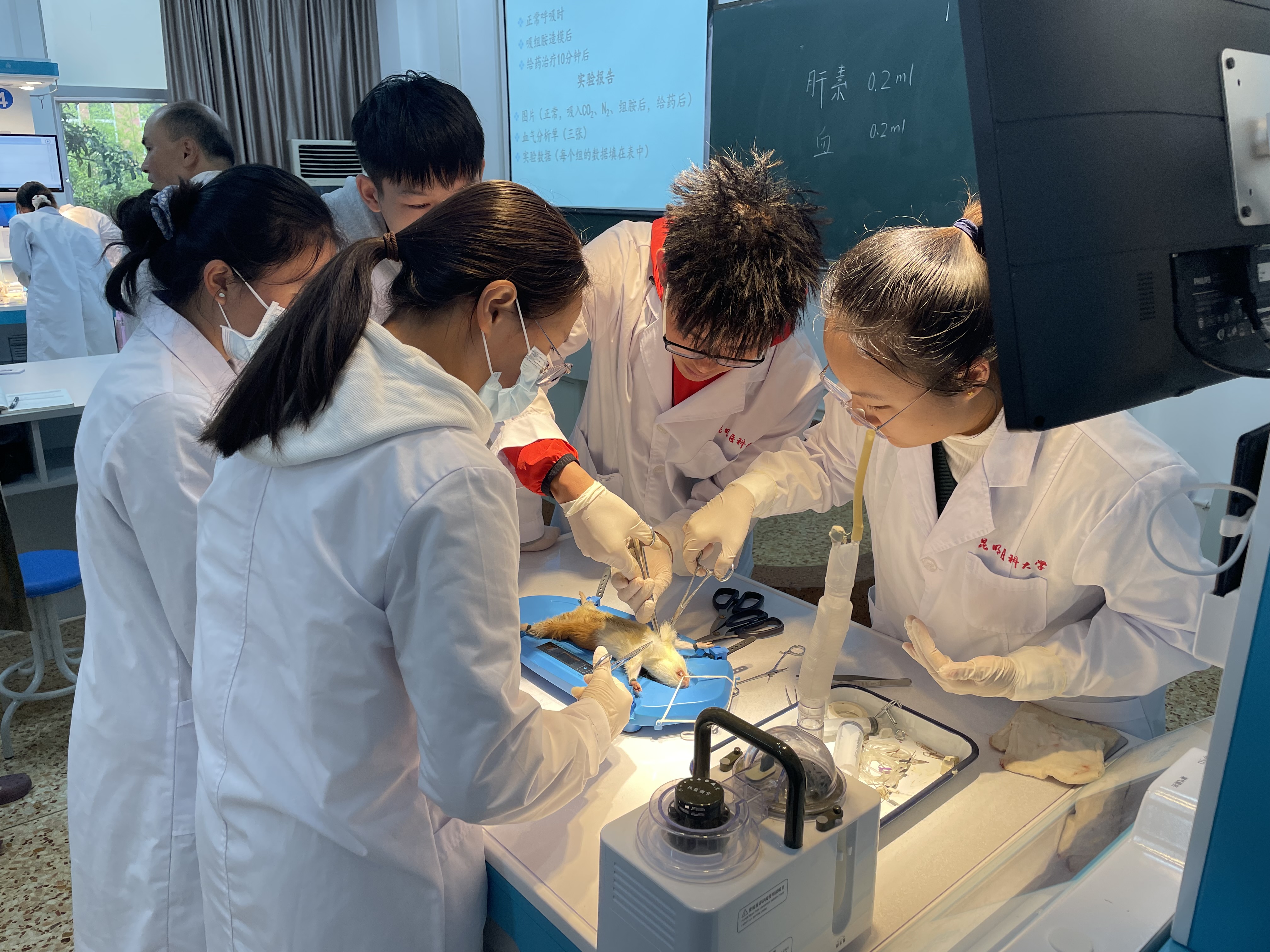Introduction
School of Basic Medical Sciences of Kunming Medical University was formerly known as the Department of Basic Medicine established in 1986. In 2000, it was renamed as School of Basic Medical Sciences. It is the largest school integrating teaching, scientific research and student management. It adheres to the school spirit of fine work, happy teaching, erudition and innovation, and adheres to the development strategy of teaching building school, talent developing school, discipline strengthening school, culture promoting school, management living school, characteristic running school. The school works hard in teaching, scientific research, and education, and has made gratifying results.

Basic Medicine Building
The school has 8 departments: Human Anatomy and Tissue and Embryology, Pathology and Pathophysiology, Pathogen Biology and Immunology, Biochemistry and Molecular Biology, Cell Biology and Medical Genetics, Physiology, Pharmacology, Physical Mathematics and Computer Science. It is equipped with a Basic Medicine Experimental Teaching Center with five laboratories including morphology, kinesiology, cell biology and molecular biology, pathogen biology and immunology, human anatomy and one life science museum. There are two research institutes: Institute of Neuroscience and Institute of Tropical Medicine. It has five administrative departments, including Administrative Office, Teaching Office, Subject Research and Graduate Management Office, Student Work Office and Youth League Committee.
At present, the school has 237 staff, among which there are 36 with senior professional title, 83 with vice senior professional title. There are 76 doctoral and master’s supervisors, 1 High-end Talent in Yunnan Province, 1 New Century Talent of the Ministry of Education, 2 experts receiving the Special Government Allowance from the State Council, 1 Yunling Famous Teacher, and 5 Provincial Prestigious Teachers.
There are 3200 students studying at the school. The school has an information management system for full-time undergraduate programs. It has 29 programs, and sets 75 compulsory courses and 60 elective courses. It has 1 provincial teaching team, 3 provincial laboratory teaching demonstration centers, 1 provincial virtual simulation experimental center. It held 3 national teaching, research and reform projects and 5 provincial teaching, research and reform projects, 3 national first-class undergraduate courses, 7 provincial first-class courses, and won 1 first prize and 2 second prizes of provincial Teaching Achievements Award. The school also published 211 planned textbooks.
MBBS Morphology Experiment Teaching
The school now has 1 authorized academic doctorate discipline, 1 authorized academic master's discipline, and 1 postdoctoral research station in Yunnan Province. There are 2 provincial innovation teams, 1 provincial first-class discipline, 2 provincial key laboratories of universities, and 2 provincial international cooperation bases. The school undertakes 337 various scientific research projects at all levels with a scientific research fund of 63,723 million yuan. Among them, 88 are national projects and 162 provincial projects. The school has published 450 SCI-indexed papers and 38 monographs, won 1 first prize, 3 second prizes and 4 third prizes of provincial Natural Science Award, received 22 invention patents, including 5 patents transferred.

Functional Experiment
At present, School of Basic Medical Sciences has formed a comprehensive talent training system from undergraduates, postgraduates, doctoral students to international students. The college will promote development through reform, seek survival through quality, constantly deepen the teaching reform, and strive to cultivate first-class medical talents with first-class teachers, first-class teaching quality and first-class training mode, and strive to build the university into a Double First-class regional high-level medical university.
Programs
Major of Master Degree
1.Cell Biology:The major aims to cultivate morally, intellectually and physically developed professionals, having a solid theoretical foundation, systematic professional knowledge and experimental methods and skills related to the discipline to understand the frontier of cell biology; having the ability of literature retrieval and reading, being familiar with the design and operation of cell biology and molecular biology experiments, and having the ability to independently conduct research, teaching, scientific and technological development and promotion in the discipline and related disciplines.
2.Physiology:The task of physiology is to enable students to master the basic theory and basic knowledge of the law of normal human life activities through teaching, and thus in order to lay the foundation for learning other courses of both basic medicine and clinical medicine. The physiology teaching aims to educate and help students understand the laws of human life activities, strengthen the comprehensive training of students' scientific thinking methods, improve the ability to analyze and solve problems and drive self-learning.
3.Biochemistry and Molecular Biology:Biochemistry and Molecular Biology mainly investigates biological phenomena from the molecular perspective and explores the nature of life at the molecular level, such as the study of the molecular structure, function of organisms, substance metabolism and regulation. And the Biochemistry and Molecular Biology is the most advanced and dynamic frontier fields in natural science.There are eleven supervisors focusing on the studies such as cancer, diabetes, tuberculosis, and immunoactive peptides. At the same time, the discipline cultivates advanced health personnel.
Major of doctoral degree
1.Pharmacology:The pharmacology is a basic course of medical and pharmaceutical sciences which is the study of the interactions and mechanisms between drugs and body (including pathogen). The study contents include pharmacodynamics and pharmacokinetics. Pharmacodynamics describes what the drug does to the body and pharmacokinetics refers to what the body does to a drug. This course provides students with a comprehensive introduction to the fundamental Pharmacology and uses of the major classes of clinically important drugs currently used in medical practice.
2.Immunology: Immunology is an advancing subject of multi-margins. It is the basal course for medical subjects such as clinic, prevention, nursing, laboratory medicine and so on. It mainly lets students understand the basal knowledge of concepts, principles and application of the medical immunology to prepare for the latter courses. During the teaching practice, some important advances will be introduced, which make students to understand the development of modern Medical Immunology and cultivate them to explore and devote to the science.
3.Pathogenic biology:Pathogenic biology includes microbiology and parasitology. Microbiology is a science that studies the morphology, structure, life activity rules and the relationship between pathogenic microorganisms and the organism. It lays an important theoretical foundation for the study of infectious diseases, infectious diseases, hypersensitive diseases and tumors in all clinical departments. Through theory and experiment teaching, enable students to master the basic theory of medical parasitology and parasitic diseases clinical inspection knowledge and technology, for prevention and control of parasitic diseases diagnosis and to lay a solid foundation.
4.Pathology and Pathophysiology:The discipline of pathology and pathophysiology was listed by the State Council as the first batch of master's degree authorization points in 1980,and began to train doctoral candidates jointly with the Department of surgery. The major research directions include: neurological/psychiatric diseases related to cognitive disorders, basic research on neonatal hypoxic-ischemic encephalopathy, mechanism of metabolic disease kidney injury, central nervous system complications of diabetes, and pathology of neoplasia.
5.Human anatomy and histology and embryology: Human anatomy and histology & embryology belongs to the basic medicine, which mainly studies the normal morphology and structure of human organs, tissues, microstructure of tissues and the development patterns of human embryos, which is an important basic course in medical science and belongs to the category of biological science morphology. The progress and development of this subject plays an important role in promoting the development of all medical disciplines.
Contact
Address: School of Basic Medicine, Chenggong Campus, Kunming Medical University
Tel: +86-871-65922863
Email:jc65922863@126.com
